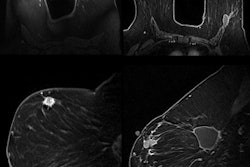Radiation therapy (RT) can benefit some patients with oral cavity squamous cell carcinoma, but they can suffer acute as well as long-term toxicities. The use of lymph node ratios may help identify which patients will benefit the most, according to an article published online in Radiotherapy and Oncology.
Oral cavity cancer includes cancers of the tongue, the gums, the inside walls of the mouth, the hard palate, the buccal mucosa, and the lip. Surgical resection is the primary treatment for oral cavity squamous cell carcinoma, which is diagnosed in about 75,000 patients each year in Europe and the U.S.
Postoperative radiotherapy is prescribed only if a patient has a medium to high likelihood of having a recurrence. At-risk patients include those who had large or deeply penetrating tumors, positive surgical margins, extracapsular extensions, and/or advanced nodal disease (Radiother Oncol, November 15, 2012).
But should all of these patients undergo debilitating radiotherapy? Dr. Damien Urban, of the Peter MacCallum Cancer Centre in Melbourne, Australia, and co-authors decided to see if lymph node ratio -- the ratio of positive lymph nodes to the number of nodes examined -- could help identify patients who would benefit the most from treatment.
They used data from the Surveillance, Epidemiology, and End Results (SEER) database to identify all lymph-node-positive patients diagnosed between 1988 and 2007 who underwent neck dissection. Urban and colleagues identified 3,091 patients, ranging in age from 14 to 99 years, of whom 76% also had radiotherapy. Patients who had lip cancer were excluded from the study because the pathophysiology of lip cancers tends to differ from that of the other oral cancers.
The patients were grouped into three categories according to lymph node ratio: less than 6.5% (34% of patients), 6.5% to 12.5% (28% of patients), or greater than 12.5% (38% of patients).
Those with oral cavity squamous cell carcinoma who underwent radiotherapy tended to be younger, had a higher nodal disease stage, and had a greater lymph node ratio. For example, 80% of patients with a lymph node ratio greater than 12.5% received radiotherapy, compared with 74% of patients with a lower lymph node ratio.
Median survival of the group was 21 months, and five-year survival was 31%. A higher lymph node ratio was associated with poorer outcome both for patients who received radiotherapy and those who did not.
However, the use of radiotherapy was significantly associated with improved overall survival and cancer-specific survival among patients who had a lymph node ratio greater than 12.5%.
The authors speculated that a high lymph node ratio may indicate a less comprehensive surgical resection or more extensive disease, increasing the risk of residual tumor. The lymph node ratio may also reflect the interaction between the tumor and the host. The number of negative lymph nodes may serve as a marker for tumor-host immunologic interactions and may actually predict better disease outcomes, they wrote.
The study's findings should be tested using another large database, Urban and colleagues concluded. A prospective study should also be conducted to identify the patients who would benefit the most from radiation therapy.



















